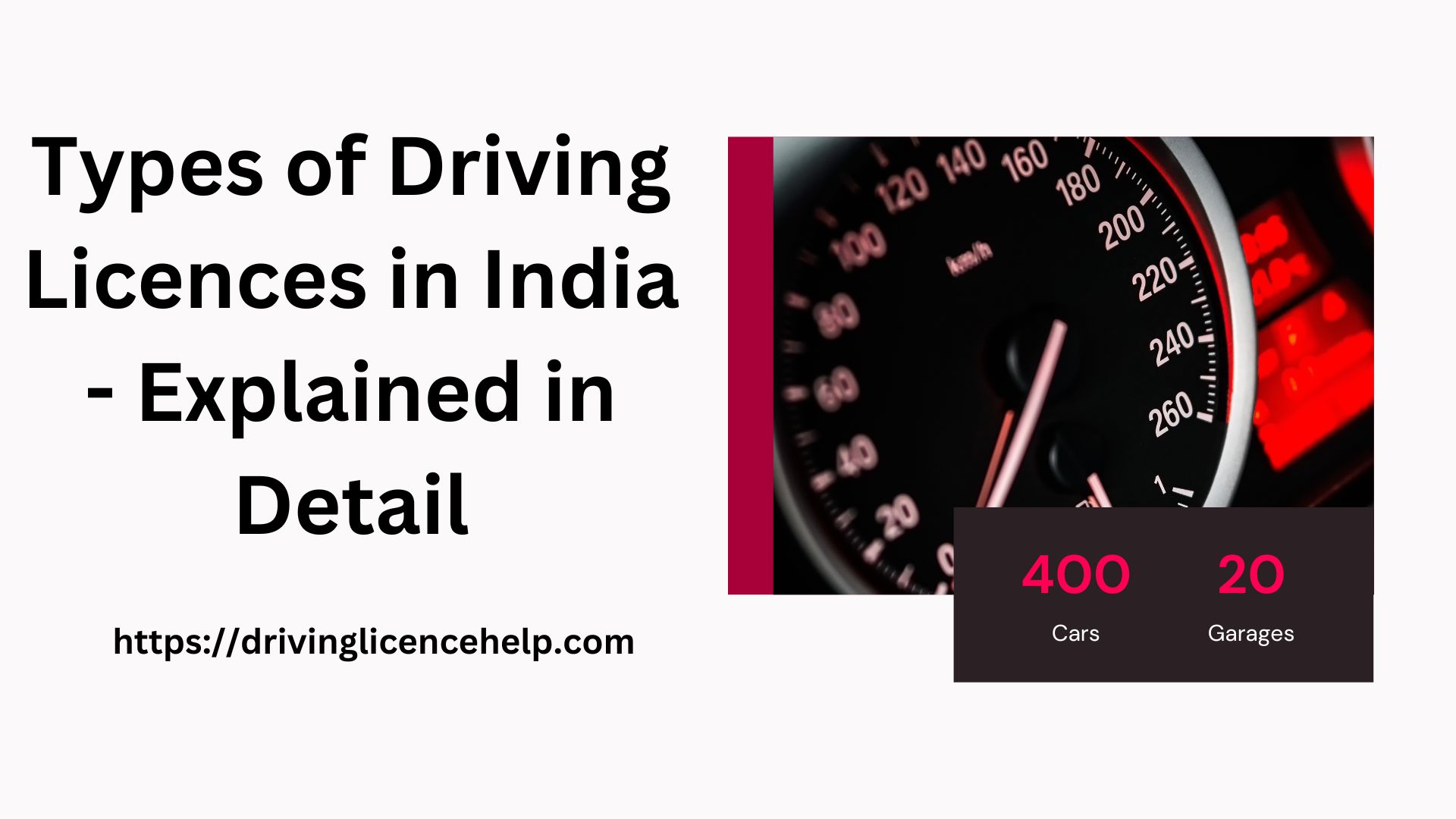Introduction:
A driving licence is an official document that authorizes individuals to operate motor vehicles on public roads. In India, the Regional Transport Office (RTO) issues driving licences, and there are different types available to cater to various categories of vehicles and specific requirements. Understanding the types of driving licences in India is crucial for both aspiring drivers and those seeking to upgrade their existing licences. In this article, we will provide a comprehensive explanation of the various types of driving licences issued in India.
Learner’s Licence (LL):
The learner’s licence is the first step towards obtaining a full driving licence. It is issued to individuals who are learning to drive a vehicle. The LL is valid for a specific period, during which the licensee must practice driving under the supervision of a person holding a valid driving licence.
Permanent Driving Licence (DL):
A permanent driving licence is issued to individuals who have completed the learning phase and passed the driving test. It allows the holder to drive a specific category of vehicles, such as motorcycles, cars, commercial vehicles, or a combination of these, depending on the endorsements on the licence.
Motorcycle Without Gear (MCWG) Licence:
The MCWG licence permits individuals to ride motorcycles without gears with an engine capacity of up to 50cc. This licence is commonly obtained by teenagers or those who prefer riding scooters or mopeds.
Motorcycle With Gear (MCG) Licence:
The MCG licence allows individuals to ride motorcycles with gears, including those with an engine capacity above 50cc. To obtain this licence, applicants must pass a driving test that includes riding a motorcycle with gears.
Light Motor Vehicle (LMV) Licence:
The LMV licence authorizes individuals to drive cars, vans, and small commercial vehicles. This licence is applicable to vehicles weighing up to 3.5 tonnes.
Heavy Motor Vehicle (HMV) Licence:
The HMV licence is required to drive heavy commercial vehicles, such as trucks, buses, and trailers. It is necessary to possess a valid LMV licence before applying for an HMV licence.
Transport Vehicle Licence:
The transport vehicle licence is for individuals who wish to drive commercial vehicles for hire or reward. It includes autorickshaws, taxis, buses, and goods carriers. Additional qualifications and tests, such as obtaining a commercial driving licence (CDL), are mandatory for this category.
Conclusion:
Obtaining the appropriate driving licence is essential for safe and legal driving in India. This article has provided a detailed explanation of the various types of driving licences available in the country. Remember to follow the necessary procedures, including applying at the Regional Transport Office, submitting the required documents, and passing the relevant tests, to acquire the driving licence that suits your needs. Always prioritize road safety and adhere to traffic rules to ensure a secure driving experience for yourself and others on the road.
Moreover, it’s worth mentioning that certain driving licences may have specific endorsements or restrictions. These endorsements indicate additional qualifications or conditions that the licence holder must comply with. For example, endorsements for carrying hazardous goods, driving in hilly areas, or operating commercial vehicles with specific capacities.
In recent years, the Indian government has taken steps to streamline the driving licence issuance process and make it more efficient. The introduction of online application systems and computerized driving tests has made it easier for individuals to obtain their licences. However, it’s crucial to ensure that the necessary training and knowledge are acquired before operating a motor vehicle on public roads.
Lastly, it’s worth emphasizing the significance of responsible driving. Regardless of the type of driving licence one holds, it is imperative to adhere to traffic rules, respect other road users, and prioritize safety at all times. Ongoing awareness of road regulations and continuous skill improvement through defensive driving courses can contribute to reducing accidents and ensuring a safer driving environment for everyone.
In conclusion, understanding the different types of driving licences in India is essential for aspiring drivers and individuals seeking to upgrade their licences. By following the prescribed procedures, obtaining the appropriate driving licence, and driving responsibly, we can contribute to a safer and more organized transportation system in the country. Remember, a driving licence is not just a legal requirement but also a responsibility to ensure the well-being of oneself and others on the road.

